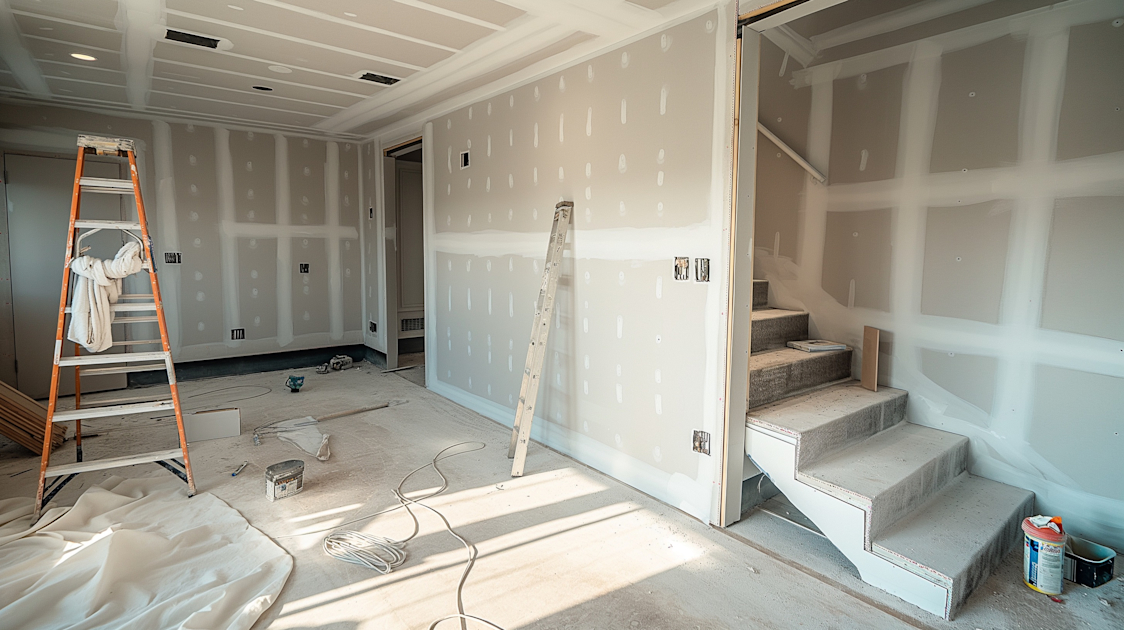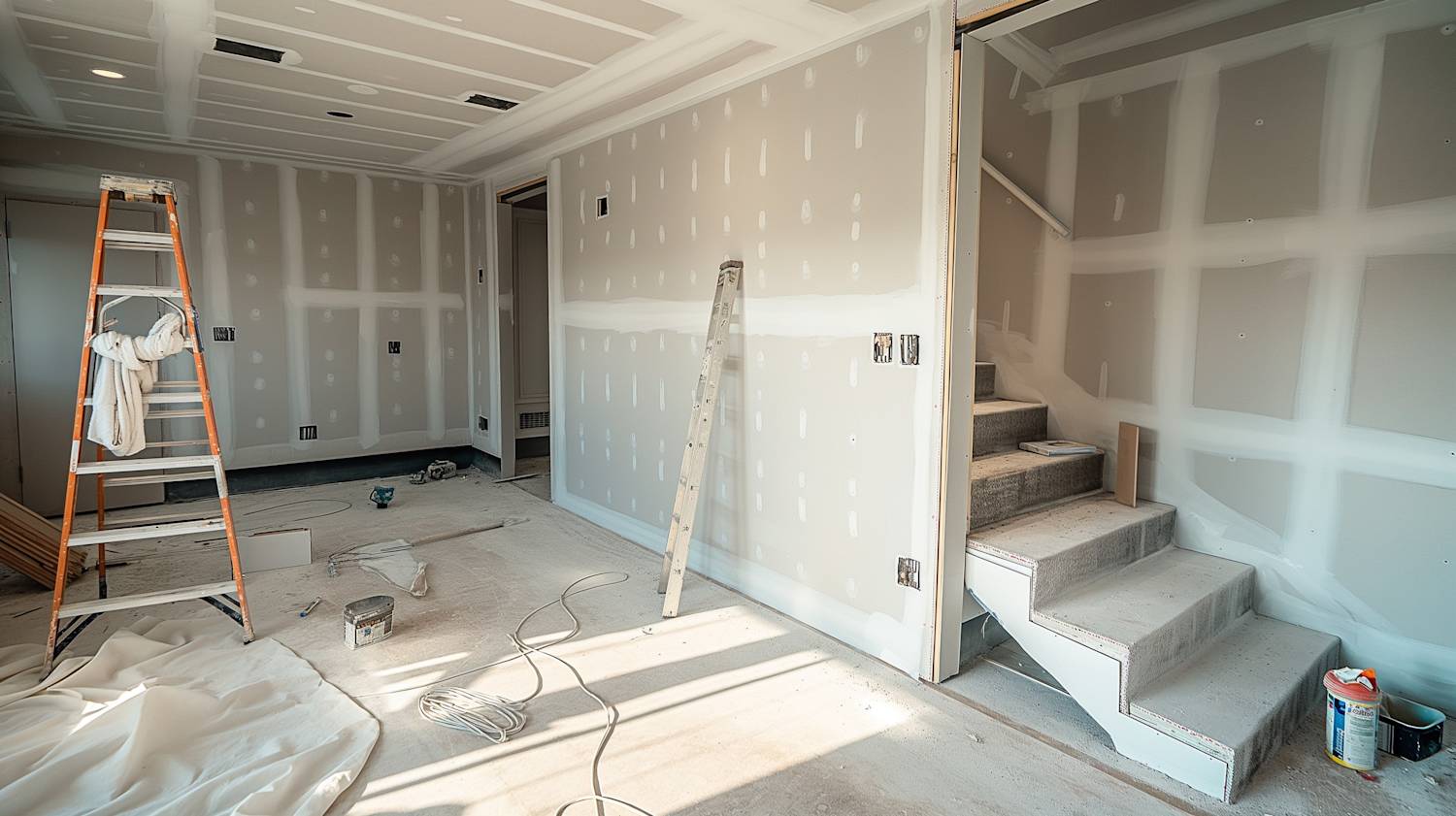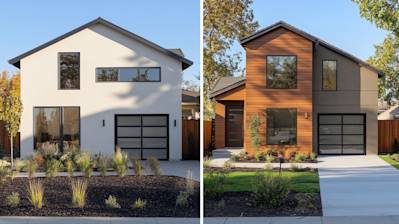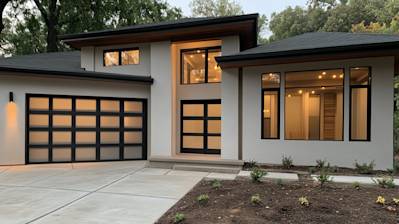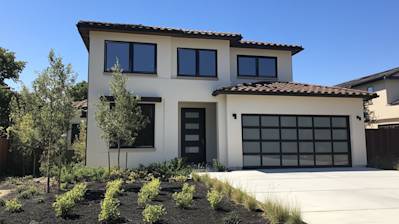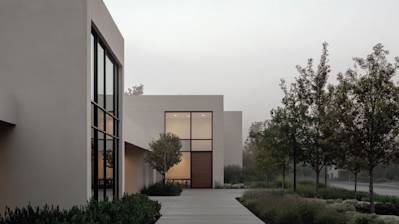When it comes to home renovations or building a new house, some of the most critical decisions revolve around the type of materials you choose. Your choices can greatly affect the lifespan, appearance, and overall quality of your home. Two options that often arise in construction are plaster and drywall. These options are primarily used for constructing interior walls and ceilings, and each comes with its own unique characteristics and considerations. Both plaster and drywall have their advocates, but understanding the differences can help homeowners make a more informed decision. Let's take a closer look at plaster vs drywall, the history, makeup, installation process, costs, and even durability of these materials for a more comprehensive understanding.
Historical Context: Plaster and Drywall Over the Years
If you imagine the interior of a home, chances are you're imagining a home with drywall, given that it's the most common wall material in use today. But this wasn't always the case. Before the 1950s, plaster was used extensively, leading to a significant number of historical properties having lath and plaster walls.
Plaster: A Glimpse Into the Past
Plaster has a long history, with evidence of its use dating back to 7500 BC. The Romans utilized a form of plaster, pozzolana cement, that incorporated volcanic ash, creating a material that could set under water. In modern times, plaster is typically combined with lath, thin strips of wood, to form walls. This older plaster and lath technique was labor-intensive, requiring skilled workers to mix and apply several layers of plaster.
Drywall: Birth of a New Era
Drywall was introduced in the early 20th century as an alternative to plaster. It quickly rose in popularity due to its ease of installation and cost-effectiveness. Drywall is manufactured by sandwiching a layer of gypsum between two sheets of paper. The gypsum makes it resistant to fire, and the paper gives it strength and makes it easy to hang. This efficient and practical solution became a favorite among builders and homeowners alike.
Differences in Installation: The Plaster vs Drywall Debate
While both of these materials serve the same purpose - to construct walls and ceilings - their installation processes are significantly different. This difference can have implications for the time, skill, and manpower needed to complete a project.
Installing Plaster
The process of installing plaster requires a couple of steps:
- First, wooden laths are nailed to the framing of the house.
- A layer of wet plaster is then applied over the laths.
- Once the first layer has dried, a second layer is added.
- The second layer is troweled and smoothed to finish.
Installing Drywall
Compared to plaster, drywall installation is considerably simpler:
- Cut the drywall panels to fit the wall.
- Attach the panels to the framing.
- Tape over the joints between panels.
- Finish with several layers of joint compound and sand smooth.
Analysis of Costs: The Financial Implications of Plaster vs Drywall
The cost of plaster versus drywall is a key factor to consider. Generally, drywall is less expensive and quicker to install, making it a popular choice for budget-conscious homeowners or for those with a tight construction schedule.
Cost of Plaster
Plaster is more labor-intensive to install than drywall, and requires the expertise of a skilled tradesman, which can drive the cost up. However, many homeowners find that the additional costs are worth it for the durability and aesthetic qualities that plaster offers.
Cost of Drywall
Drywall is less expensive to install than plaster. The materials are less expensive, and it takes less time to install. For new construction or large renovations, these cost savings can be significant. However, the trade-off may be less durability and a less personalised finished look as compared to plaster.
Durability Comparison of Plaster and Drywall
When comparing plaster vs drywall, durability is another key aspect. The properties of these materials can greatly impact their longevity and performance over the lifetime of your home.
Strength of Plaster
Plaster walls are notoriously solid and heavy. They are less likely to suffer from dings and dents and can provide an excellent surface for painting or hanging artwork. Its durability makes it a popular choice for older homes or high-end construction where longevity and aesthetics are paramount.
Durability of Drywall
While not as sturdy as plaster, drywall is still a durable option for most homes. It's easier to repair than plaster and resistant to cracking. Drywall's fire-resistant properties also add an extra layer of safety.
Whether you decide on plaster or drywall largely depends on what factors are most important to you. Budget, installation time, durability and desired finish can all impact your decision. Neither plaster nor drywall is universally superior; each has its pros and cons. Understanding the strengths and limitations of each can help you make an informed decision for your home.
Frequently Asked Questions About Plaster Vs. Drywall
What defines plaster and drywall?
The primary difference between plaster and drywall lies in their composition and installation process. Plaster is a building material composed of a mixture of lime, sand, and water that is applied over strips of wood, known as lath. On the other hand, drywall, also known as gypsum board or sheetrock, is made of a layer of gypsum sandwiched between two sheets of paper.
How does the installation process differ for plaster vs. drywall?
The installation process for plaster is more labor-intensive and time-consuming than for drywall. Plastering requires skill and experience to correctly prepare and apply, often needing several layers. In contrast, installing drywall is simpler, involving measuring, cutting, and installing the sheets, then filling in the joints with a compound, and finally sanding and painting.
Which one is more durable, plaster or drywall?
Generally, plaster walls are significantly more durable than drywall. They are more resistant to knocks and dents due to their solid, robust nature. Drywall though less resilient, offers ease in repair in comparison to plaster.
Which offers better insulation and soundproofing, plaster or drywall?
Both plaster and drywall have insulating and soundproofing qualities. However, because plaster is denser, it generally provides better soundproofing than drywall. Regarding insulation properties, the choice of materials used in the process can influence the level of insulation in both plaster and drywall.
How does cost factor into choosing plaster vs. drywall?
Drywall tends to be cheaper and easier to install, making it a popular choice for home renovation projects. On the other hand, while the material cost of plaster can be similar to drywall, the labor costs are usually higher due to the expertise required for installation.
What about the aesthetics of plaster vs. drywall?
If you want a smooth, seamless look, plaster could be the better choice. Its application process allows for creative and decorative finishes. Drywall, however, offers a more textured look.
How easy is it to repair plaster and drywall?
Drywall is generally easier and quicker to repair or replace. Plaster, while more durable and less prone to damage, can be more challenging and costly to repair if it does get damaged.
Which one is more suitable for a humid environment, plaster or drywall?
Plaster tends to handle moisture better than drywall and is less prone to mold growth. However, there are moisture-resistant drywall options available that are designed for use in bathrooms and other high humidity areas.
Should I choose plaster or drywall for my construction project?
Both plaster and drywall have their merits, and your choice depends on various factors such as budget, project timeline, aesthetics, and performance needs. You could choose the sturdiness and finish of plaster if you have the budget and time. If you’re looking for cost-effectiveness and quick installation, drywall would be a better choice.
Can I plaster over drywall?
Yes, it’s possible to apply a thin layer of plaster over drywall to achieve a smooth finish. This process is also called skim coating.
Pros and Cons: Plaster vs Drywall
Plaster
Pros of Plaster
-
Durability: Plaster walls are typically stronger and more durable than drywall. They are more resistant to knocks and dents, making them better suited for high traffic areas.
-
Fire resistance: Plaster walls are more fire resistant as compared to drywall. They can slow down the spread of fire, providing additional safety.
-
Noise reduction: Plaster walls have excellent sound-proofing qualities. They can provide a higher level of noise reduction compared to drywall due to their denser composition.
-
Aesthetics: Plaster can provide a seamless, smooth finish, especially if applied by a skilled professional. It is often favored for high-end home and historic restoration projects.
-
Flexibility: Plaster provides more flexibility in terms of design and can be easily shaped for decorative wall features unlike drywall.
Cons of Plaster
-
Cost: Generally, plaster is more expensive than drywall both in terms of materials and labor. It also requires a higher level of expertise to apply, which can increase the cost.
-
Installation time: Plastering is a time-consuming process. It requires several coats and each coat must dry before the next can be applied, which can mean a longer installation time compared to drywall.
-
Repair Difficulty: Plaster walls can be more challenging to repair when damaged. Matching textures can also prove to be a complicated task during the repair process.
Drywall
Pros of Drywall
-
Cost-effectiveness: Drywall is usually cheaper than plaster. It offers a cost-effective option when it comes to wall installation without compromising too much on quality.
-
Faster installation: Drywall installation is simpler and faster than plaster. Large panels of drywall can be hung in a fraction of the time it takes to apply several coats of plaster.
-
Easy to repair: Repairs are relatively easier to perform on drywall. Minor dents and holes can be fixed with a simple patch job, which can be a DIY task for many homeowners.
-
Insulation properties: Drywall provides good insulation properties. This can result in energy efficiency and a reduction in utility costs.
Cons of Drywall
-
Sensitivity: Drywall can be relatively sensitive to impact. It can easily get dents and holes.
-
Noise transmission: Drywall doesn’t provide the same noise reduction as plaster. If you live in a noisy area or require a quiet space, you may need to consider additional insulation.
-
Generic appearance: Drywall does not offer the same high-end, seamless look that you can achieve with plaster. It can instead give a rather generic appearance.
When deciding between plaster and drywall, it mostly comes down to budget, intended use, and personal preference. Plaster tends to be more expensive and difficult to work with, but provides a seamless and upscale look, and better noise reduction. On the other hand, drywall is more cost-effective, easier to install and repair, but it doesn't provide the same noise reduction and aesthetic quality as plaster. Carefully weigh your options before making the final decision.
Summary
When you consider the process, finish, and durability, plaster vs drywall seems to have unique advantages. Plaster is the perfect choice if you want a sturdy and high-quality finish since it's tougher and more fire-resistant. However, putting up plaster is labour intensive and it requires a degree of experience, something that makes it a more expensive option.
On the flip side, drywall installation is a simple task, the lightweight panels are quick and easy to put up. It's an ideal choice for people with budget constraints, do-it-yourself homeowners or those who want to wrap up their projects in a short span. However, compared to plaster, drywall doesn't offer the same level of solidity and luxurious feel.
All in all, plaster vs drywall is a classic debate that comes down to personal preference. Whether you love the smooth, durable plaster or you prefer the budget-friendly, easy-to-install drywall, both have their place in the home renovation and construction field. It’s important to consider your specific needs, budget, and timeline before you make a choice.
About Atlas Stucco
Welcome to Atlas Stucco, your trusted stucco specialist in Sacramento, CA! We're a dedicated team of craftsmen proudly serving our community with superior stucco installation, repair, and refinishing services. With an unwavering commitment to quality and creativity, we combine traditional stucco techniques with the latest advancements to ensure your home or business project is completed to perfection. Here at Atlas Stucco, we not only create aesthetic appeal, but enduring value.
Tags: plaster vs drywall, building materials, home renovation,

